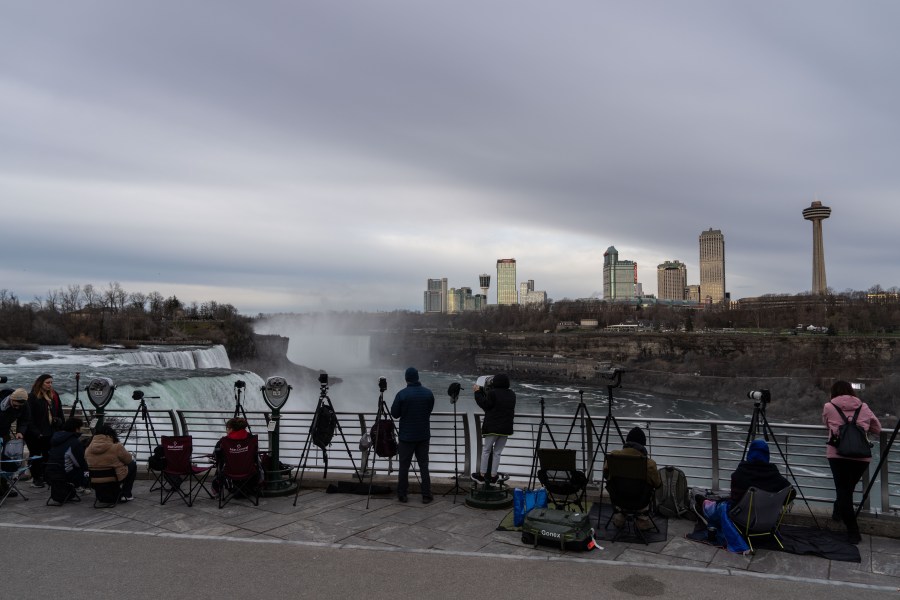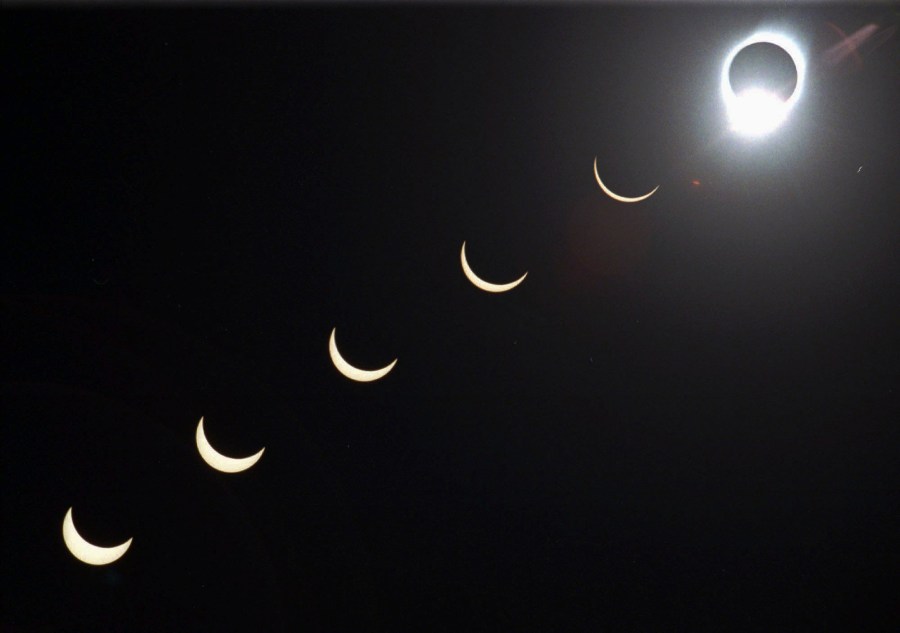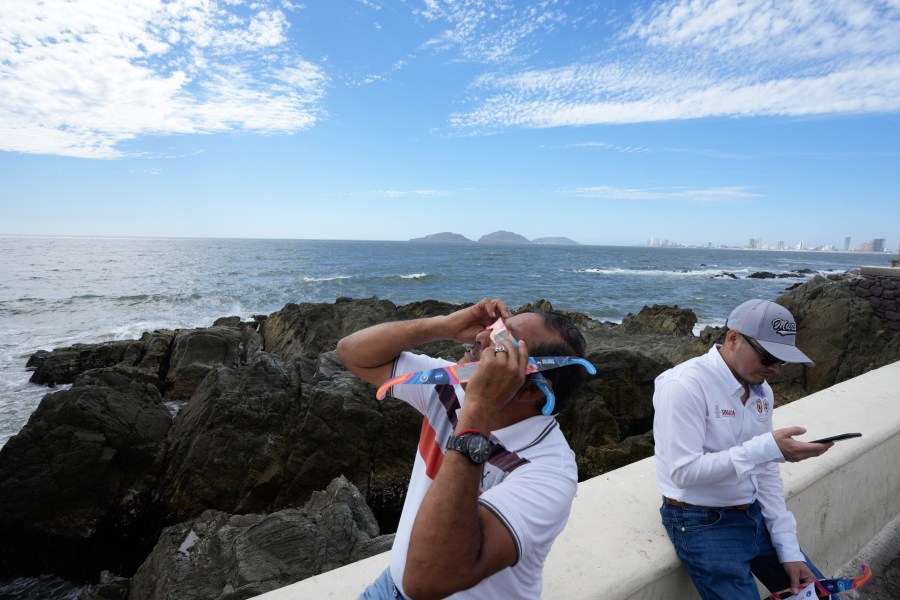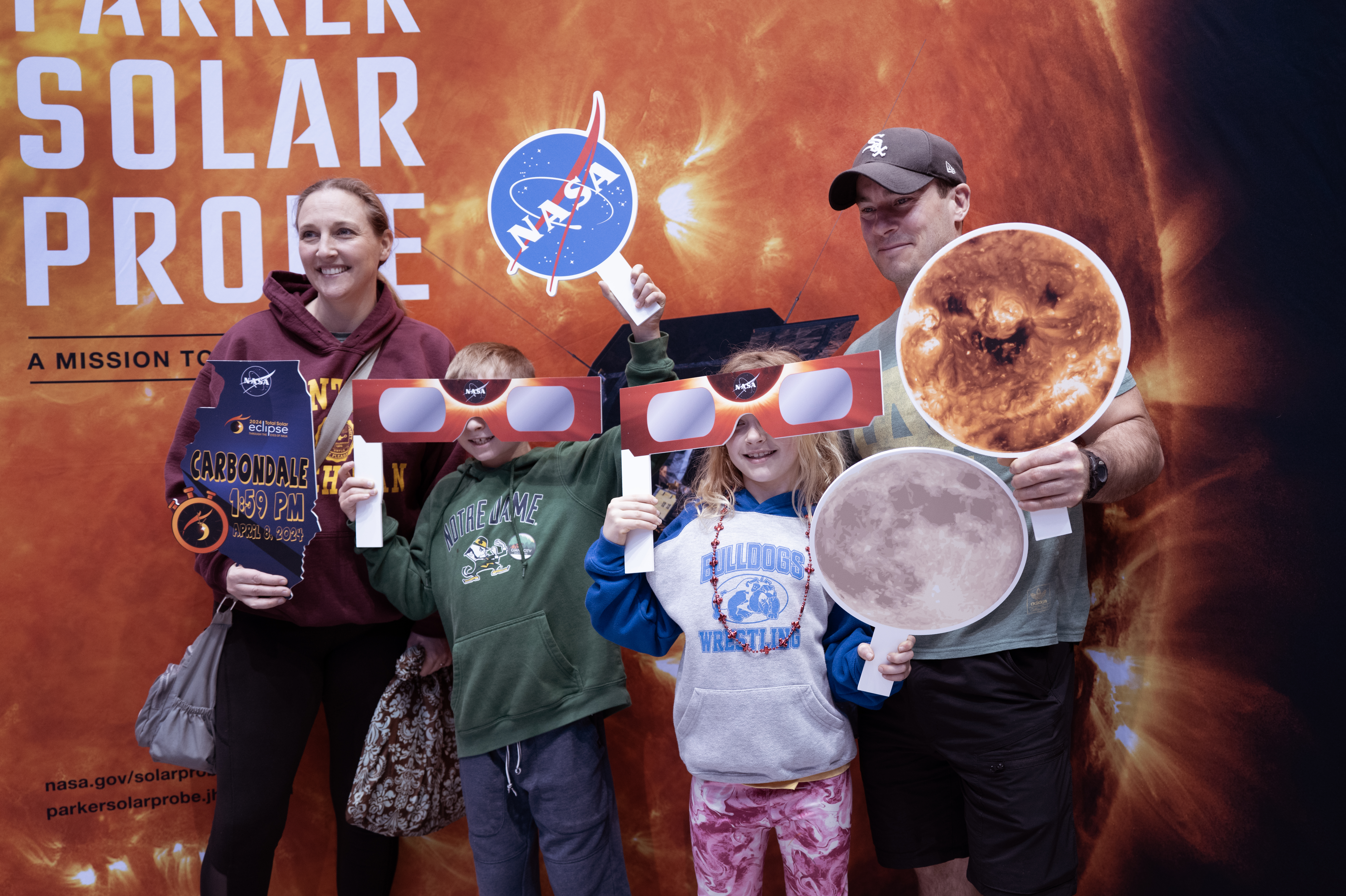How to watch the 2024 total solar eclipse in the US
- The 2024 total solar eclipse will be visible in 15 states
- NewsNation will present special live coverage throughout the day
- Next eclipse: August 2026 over Greenland, Iceland, Portugal, Russia, Spain
CHICAGO (NewsNation) — Don’t forget your eclipse glasses Monday, as they’ll be needed to view the last total solar eclipse that can be seen from the continental U.S. for 20 years.
States and cities have been preparing for an influx of people visiting the path of totality, and that fascination is nothing new.
NewsNation will present special live coverage throughout Monday on air and online. Find your channel here. Keep up with our live online coverage here.
What is a total solar eclipse?
A total solar eclipse happens when the moon lines up perfectly between the Earth and the sun, blotting out sunlight. The day will turn into night when the moon blocks the sun for a few minutes.
The path of total darkness is expected to stretch from Mexico and Texas through Maine and parts of Canada.
Other than its occurrence in North America, the eclipse somewhat exciting for at least a couple of major reasons.
For starters, the 2024 eclipse has a wider path of totality than the last total solar eclipse visible from the U.S. in 2017 and passes over a more populated swath, with approximately 31.6 million people being in the path of totality compared to the 12 million who were along the path in 2017, according to NASA.
The duration of the eclipse is also almost two minutes longer than it was in 2017, giving viewers a better chance to see the sun’s corona — which itself may be more active than it was in 2017 thanks to the current period of heightened solar activity.
When will the eclipse reach totality?
While the exact time the solar eclipse will occur will vary depending on one’s location and time zone, NASA shared a rough viewing time estimate of the event according to major cities on the path of totality. These cities will also experience a partial eclipse before and after these times, NASA said.
- Dallas, Texas: 1:40-1:44 p.m. CDT
- Idabel, Oklahoma: 1:45-1:49 p.m. CDT
- Little Rock, Arkansas: 1:51-1:54 p.m. CDT
- Poplar Bluff, Missouri: 1:56-2:00 p.m. CDT
- Paducah, Kentucky: 2-2:02 p.m. CDT
- Carbondale, Illinois: 1:59-2:03 p.m. CDT
- Evansville, Indiana: 2:02-2:05 p.m. CDT
- Cleveland, Ohio: 3:13-3:17 p.m. EDT
- Erie, Pennsylvania: 3:16-3:20 p.m. EDT
- Buffalo, New York: 3:18-3:22 p.m. EDT
- Burlington, Vermont: 3:26-3:29 p.m. EDT
- Lancaster, New Hampshire: 3:27-3:30 p.m. EDT
- Caribou, Maine: 3:32-3:34 p.m. EDT
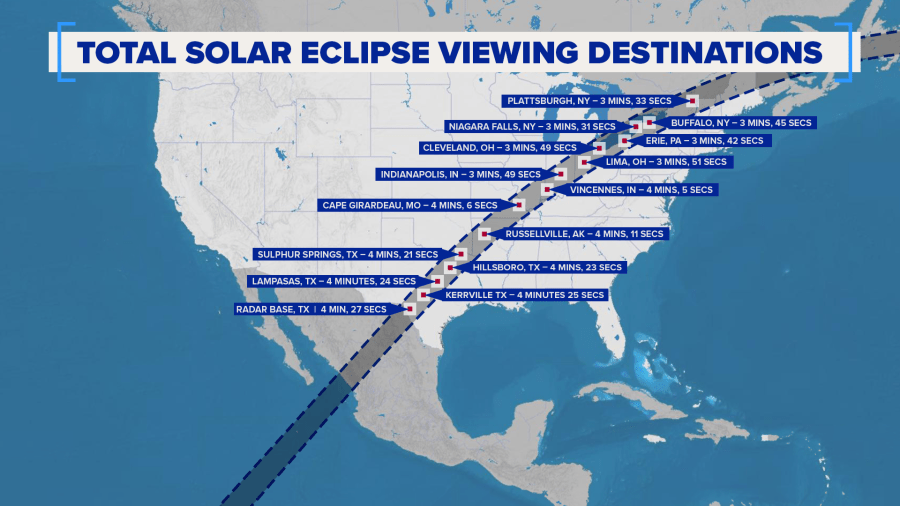
How does the weather impact your experience?
Clouds are forecast for much of the eclipse route through the U.S. with some possible patches of clear skies in some spots, according to the latest forecast from the National Weather Service.
If you’re in Vermont, Maine and Canada, you’re in luck. But for the rest of those in the path of the total solar eclipse, it could be dicey weather-wise.
Texas is likely to have the heaviest cloud cover. More concerning, the weather service is forecasting severe weather — tornadoes and hail — about the time of the eclipse for parts of Texas, Oklahoma, Arkansas and Louisiana.
Dicey weather could impact the chances of viewing the natural phenomenon. However, in the event of cloudy skies or rain, you can still watch the total solar eclipse online.
Northern New England into Canada is still the best bet to witness the eclipse.
What if you’re out of the totality path?
If you don’t live within the path of totality, you still have a chance to see the moon partially block out the sun — especially in states along the eclipse’s course.
This may bring you to another question — if you are outside the path of totality, do you actually need to wear those special eclipse glasses everyone is talking about? You’re not in the golden region of the solar eclipse, so does it matter?
The short answer is yes, if you’re outside the path of totality, you’re going to want to wear eye protection before observing the eclipse. In fact, only those shrouded in the path of totality can go without eclipse glasses (but not the entire time).
When do you need to wear glasses?
In or out of the path of totality, you’ll need to wear (or use on your camera, binoculars, or telescope) solar filters to protect your eyes.
Those within a certain area will see the sun totally blocked, while for those outside that path, the sun will look like a sliver.
The eclipse itself will last several minutes. Experts have warned that everyone viewing the solar eclipse should wear proper eye protection before looking skyward.
For those in the path of totality, the eye protection can come off for two to four minutes when the moon completely blocks the sun. But, as soon as the smallest sliver of the sun reappears, the eye protection needs to go back on.
You’ve likely been warned before not to stare at the sun because it can damage your eyes. The damage caused by looking at an eclipse without eye protection has earned its own name: eclipse blindness, or solar retinopathy.
NASA says viewing the sun during the eclipse without the proper protection “will instantly cause severe eye injury.”
When and where is the next total solar eclipse?
Can’t catch the total solar eclipse Monday? Don’t be too bummed.
Despite the fervor surrounding the eclipse, these types of celestial events take place roughly every 18 months, according to astronomers. The next one is actually a bit of a longer wait, occurring on Aug. 12, 2026, but the following total solar eclipse is less than a year afterward, on Aug. 2, 2027.
So, why all the hubbub over Monday’s eclipse? It’s because it’s visible in the continental U.S., and across a relatively large, populated swath of the country.
The path of totality for the next solar eclipse, on Aug. 12, 2026, will run through portions of Greenland, Iceland, Portugal, Russia and Spain — but mainly over the Arctic Ocean, as seen in maps provided by the National Solar Observatory. The one after that, on Aug. 2, 2027, will pass across portions of the Middle East and North Africa.
Portions of Australia will catch the following total solar eclipse in 2028, while southern Africa and (again) Australia will see the one after that in 2030. And NASA has mapped out 49 more total solar eclipses through 2100, for anyone planning to become an eclipse tourist in retirement.
How to watch on NewsNation
NewsNation will present special live coverage throughout Monday. Senior national correspondent Brian Entin will co-anchor a special broadcast from the network’s headquarters in Chicago from 1-4:30 p.m. ET, alongside “NewsNation Now” anchors Nichole Berlie and Connell McShane as the eclipse takes place across the United States.
Contributing to the coverage will be correspondents dispatched throughout the country in the areas of totality. National correspondent Brooke Shafer will report live from the Indianapolis Speedway in Indiana, while correspondents Stephanie Haines will be live from Dallas and Ali Bradley will be live from Del Rio, Texas. Additionally, national correspondent Caitlyn Becker will provide live coverage from Niagara Falls State Park in New York.
NewsNation will also provide ongoing coverage and video from NewsNation affiliates across the country as the interest and energy around the eclipse captivates Americans.
NewsNation will also feature special coverage, including analysis and reporting on the impact of the crowds who are traveling to see the solar eclipse, its economic impact and how to watch it safely. NewsNationNow.com and the NewsNation app will livestream the experience and the eclipse as it crosses America.
Find your channel here. Keep up with our live online coverage here.
The Associated Press and NMW contributed to this report.











